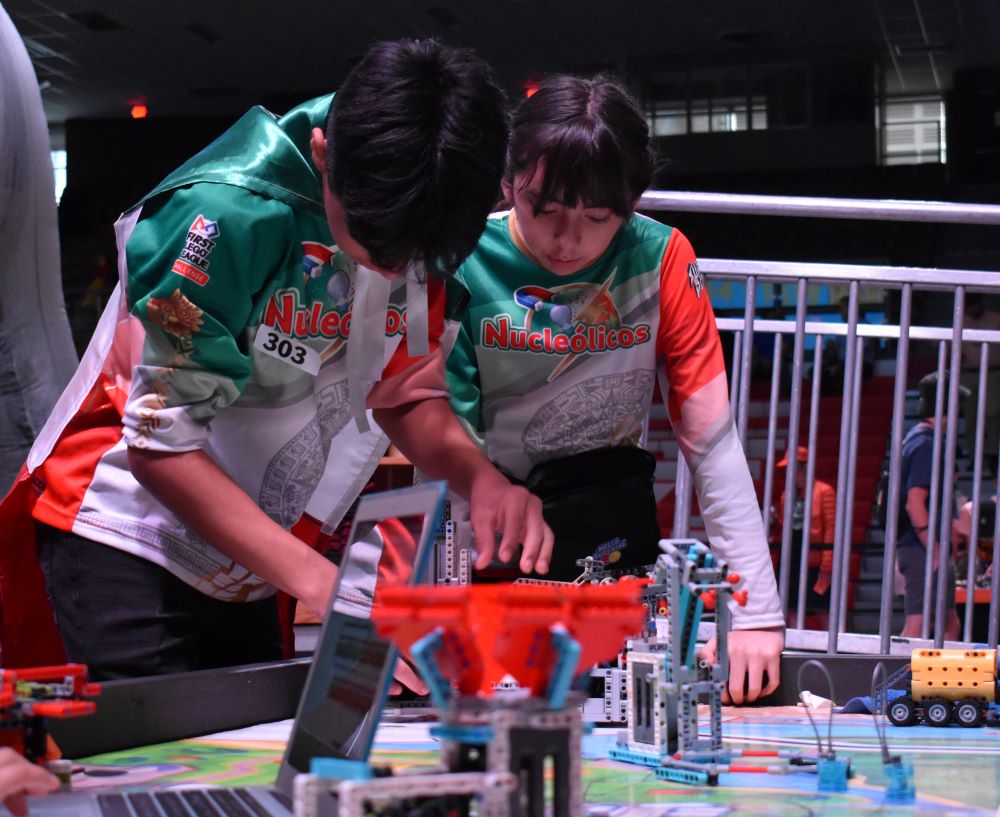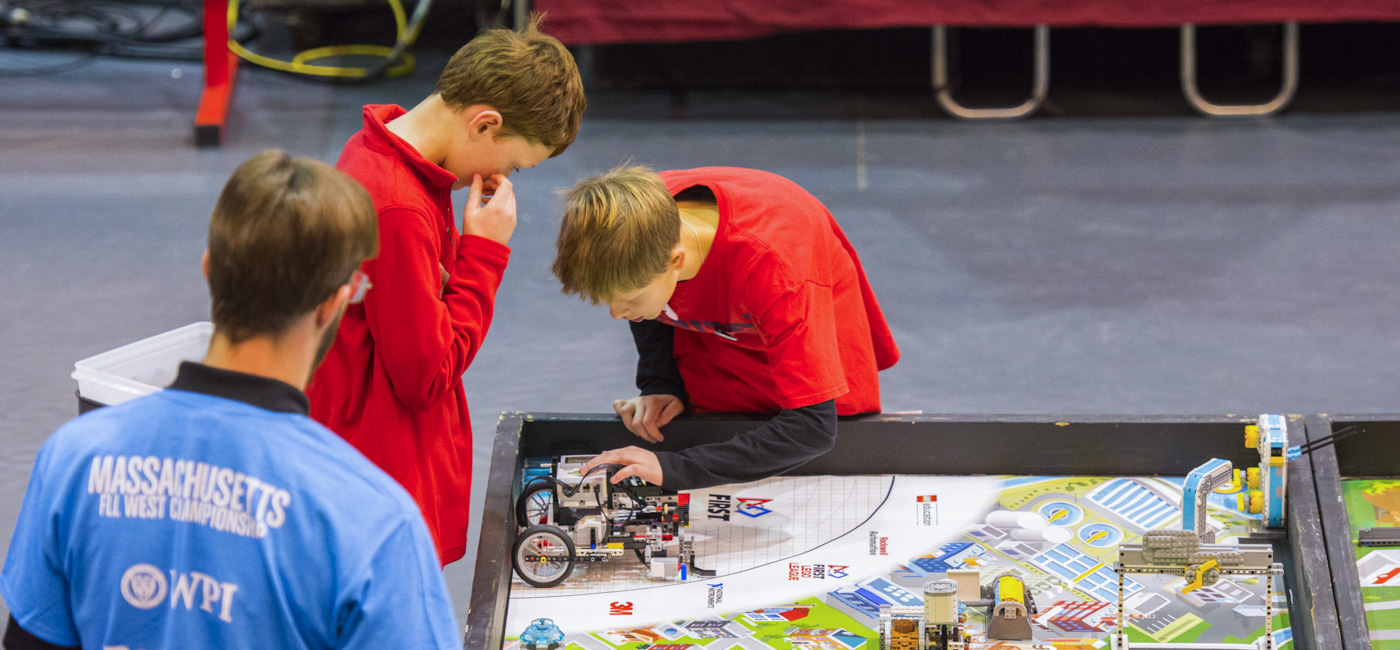WPI is getting ready to host a FIRST LEGO League (FLL) qualifying event on campus Dec. 14, and a LEGO RoboNautica competition Dec. 21.
FIRST — which stands for “For Inspiration and Recognition of Science and Technology” — was created by WPI alumnus Dean Kamen. (If that name sounds familiar, he’s the inventor of the Segway.) The company collaborates with LEGO and uses the iconic, colored building bricks to illustrate math, engineering, science and communication methods in collaborations with sponsors — such as WPI.
“It will give [students ages 9-14] the opportunity to learn more than they would in the classroom in a hands-on environment,” says Nicholas Galotti, a 2005 graduate of WPI who was first involved with FIRST as a student, in 1996, and went on to start the Burncoat FIRST Robotics team. “It aligns extremely well with the mission of WPI.”
Beginnings
The LEGO event RoboNautica kicked off WPI’s involvement with FLL, Galotti says, over a decade ago. In more recent years, WPI has become the only FLL full partner in Massachusetts. Instead of its being first-come, first-served, qualifying events were added to the competitions as participation and interest grew.
“The Burncoat FIRST Robotics team, which is sponsored by WPI, offered to run an event,” he says, and hosted it in the [Rubin] Campus Center.
Interest has taken off from there, according to Galotti and Shaver, with last year’s 36 teams turning into 42 teams this year. The events are so popular — with 360 teams in the state — that splitting up the Bay State into two regions for the qualifying tournaments and championship may soon be a reality, Shaver says. Massachusetts is one of the biggest FLL regions in all of the U.S. and Canada.
Shaver also first became involved in 1996 and participated in WPI’s FIRST team as a high-school freshman. “I quickly got hooked,” she says. She stayed in a support role for the robotics competitions through her undergraduate and graduate years, finally taking a job with FIRST in training and support, and then at WPI five years ago to head up its robotics tournaments.
This Year’s Competition
Shaver says 84 student teams will compete at RoboNautica; 82 will have advanced from the qualifying tournaments from all over the state, and two come from Jamaica, where there is no established FLL program. The team maximum is 10 members, but the average is 5-6 members.
Most teams are not formed by schools, but by parents or non-school groups. The remaining teams are school or teams formed as the result of an after-school group. But as long as team members are 9-14 years old, have 3-10 members and have an adult coach, anyone can compete.
Each year’s competition has a theme, and this year’s is “Nature’s Fury,” where team members build something that is related to extreme weather.
However, Galotti points out that it isn’t a simple matter of whichever team places highest gets in the qualifying top ten. The robotic creation is only a third of the content on which teams are judged. “There is also a project … where they must research a topic, find a problem, and create a solution. They then need to make a five-minute presentation to the judges and answer many more questions.” The teams’ ability to work together also plays a role in judging, he says.
Logistics and Support
Galotti says about 15 WPI students volunteer to help out with the qualifying event in terms of judging and other tasks. The other volunteers — upwards of 40 people — are all from the Burncoat Robotics team.
Shaver says coordination of competitions is no easy feat. “Particularly for the championship, we need to work with all the qualifying tournaments (eight in Massachusetts) to ensure the right teams move forward from the event,” she says. “Then all teams have to be registered, and information on the event distributed to the teams. And it isn’t just the students competing that have to be factored into the master plan. All bring coaches, parents, etc., which means detailed planning of space and traffic flow.”
Also, Shaver says, “to manage 84 teams we need about an equal amount of volunteers. Between recruiting about 50 professionals to be judges, and others to referee and manage teams, it takes a lot of people to make it happen.”
But to make it all worth it, the engineering skills that emerge from the interest in the childhood building blocks are a valuable starting point in education, says Shaver. “They can advance that interest by adding motors, a computer, and learning how to programand bring it to a whole new level.”

